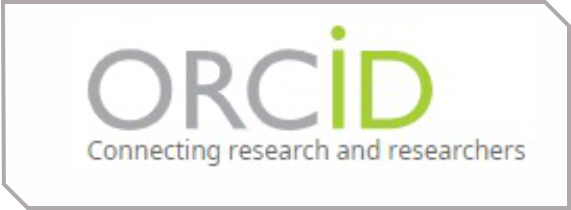Leadership Programs And Models AT SMP Negeri 31 Medan
DOI:
https://doi.org/10.55606/ijhs.v4i1.3307Keywords:
leadership, teachers, studentsAbstract
Education is a process of learning, skills and routines of a group of people that are inherited from one offspring to the next which is usually obtained through the teaching process. Leadership is the influence generated between individuals, which is carried out under certain circumstances and directed through the process of communication to achieve certain goals. In the world of education, the role of these leaders is needed in school stakeholders (teachers / staff, employees, students, and school residents). In the context of the leadership program at SMPN 31 Medan, there are challenges when developing leadership initiatives. For example, out of 10 programs submitted to the agency, sometimes these programs do not match or even exceed the plans that have been made, caused by the sudden need to create new programs such as teacher training for the independent curriculum, and so on. The purpose of this study explores the program and leadership model in SMP Negeri 31 Medan. Research methods involve observation, interviews, and analysis, documentation to understand the implementation of educational programs and leadership strategies in such schools. The respondents of this study consisted of the vice principal, a teacher and two students. The results of this study show that the leadership program and model at SMPN 31 Medan has been carried out, this is shown by changes when representatives and principals after carrying out their leadership through planning and reserve programs face every challenge that comes. Next, Leadership of teacher performance has demonstrated effective leadership of teacher performance. This is shown by constructive feedback in accordance with the direction of leadership, namely the principal often directs teachers in a good way also often gives constructive suggestions and this is responded well by teachers. And, Leadership towards students at SMPN 31 Medan has characteristics and provides positive change. It is shown that students obey and obey the rules of the school and the sense of fairness felt by students because no individuals are found to be treated specifically or deliberately ignored.
References
Bradley, S & Viona, R. 2021. Principal's Leadership in Improving Teacher Performance. Edunesia: Scientific Journal of Education. Vol. 2. No. 1.
Goddess, R. S. 2018. Professional ability of teachers and work motivation towards the teaching performance of elementary school teachers. Journal of educational administration. Vol. 25. No. 1.
Edy, Sutrisno. 2020. Human Resource Management. Kencana Prenada Media Group, Jakarta.El-Islam, Vol. 13, No. 2.
Eni Rakhmawati. 2023. Principal Leadership Model in Improving
Hasan Basri., Educational Leadership, (Bandung: Pustaka Setia, 2015), p. 3.
Herawati Syamsul. 2017. Application of Principal Leadership in Improving Teacher Performance at Junior High School (SMP) Level. Makassar: IDAARAH JOURNAL, VOL. I, NO. 2,
Istikhomah. (2018). Leadership strategies in improving teacher performance. Journal of Nur El-Islam, Vol. 13, No. 2.
Meldafani. 2023. Leadership Characteristics of the Principal in Developing the Mobilization School Program at SMA Negeri 1 Kota Dumai. Journal Of Social Science Research Volume 3 Number 6 Year 2023 Page2673-2684 E-ISSN2807-4238 andP-ISSN 2807-4246
Nur Nisfi, S & Anne, E. 2023. The Role of Educational Leadership. Karimah Tauhid Journal. Vol. 2. No. 1.
Quality of Education in Paesan Muhammadiyah 02 Bendan Special Program Elementary School, Pekalongan Regency. Tegal: Al-Madrasah: Scientific Journal of Madrasah Ibtidaiyah Education
Rahayuningsih, S. Rijanto, A. 2022. Increasing the competence of school principals as learning leaders in the driving school program in Nganjuk. Jamu: Journal of Community Service umus. Vol. No. 2. Thing. 120-126.
Riyatuljannah, T. 2020. The role and function of the principal in realizing effective schools in the elementary school environment. Al-Aulad: Journal of Islamic Primary Education. Vol. 3. No. 2. pp. 56-68.
Rohiat. 2008. Emotional Intelligence of School Principal Leadership. Bandung: PT. Refika Aditama. cet. 1, p. 19
Somad, M. A. 2021. The importance of Islamic religious education in shaping children's character. Qalamuna: Journal of Education, Social and Religion. Vol. 13.No. 2. Pg. 171-186.
Sugiyono, (2016). "Quantitative, qualitative, and R&D Research Methods", Publishers. Alfabeta Bandung. P. 9.Vol. 7, No. 2, 2023
Tannenbaum, R, Weschler IR, & Massarik, F 1961, Leadership and Organization: A Behavioral Science Approach, McGraw-Hill
Tuala, R. P. 2020. Organizational culture and leadership in Islamic educational institutions. Media library.
Tursia, A, et al. 2021. The influence of principal management and teacher performance on student learning interest in elementary school. Educative: Journal of Educational Sciences. Vol. 3. No. 4. Thing. 1985-1996.
Wardah Hanafie. 2022. Virtual-Based Principal Leadership. Ponorogo: Uwais Inspiration Indonesia.
Downloads
Published
How to Cite
Issue
Section
License
Copyright (c) 2023 International Journal Of Health Science

This work is licensed under a Creative Commons Attribution-NonCommercial-ShareAlike 4.0 International License.















